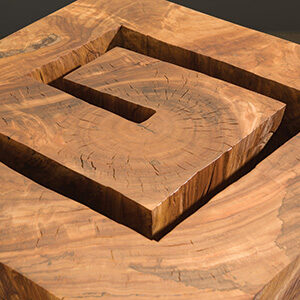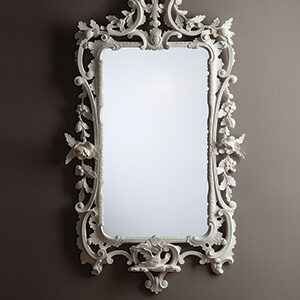Shopmade Drawing Bow
Tim Coleman keeps a healthy supply of drawing bows in his shop. In this video Tim shows off his favorites and how he uses them.When working in a communal shop, laying out a curve can be as easy as bending a strip of wood to the right shape between two hands and asking a friend, “Hey, will you come trace this?” But when working alone, Tim Coleman quickly discovered he would need some alternative solutions. In this video, he shows Ben Strano several different shop-made drawing bows he’s made, including different options for adjusting the curve and holding it in place. Our favorite is Tim’s bow made with a turnbuckle because it allows for much finer adjustments to a curve than most commercial drawing bows.
Tim also likes using a ship’s curve for asymmetrical curves, and he always keeps a handful of bows of every sort around his shop so he can draw several different curves on the same project without losing any of his setups.






















Comments
It's great to see a 'real' shop. The bicycles in the shot do not detract from the video production. They demonstrate that a hobbyist, like many of us, can have experience and skills without a 2000sq ft dedicated shop. In my small garage I've got 7 bikes, 2 canoes, and more than your average homeowners share of yard, plumbing, electrical, painting, metal fab... equipment fighting for woodworking space and time.
Amen KMacRae! On a related note, I wonder if the bikes in Tim's shop have working brakes since he mentioned using bicycle brake cables for his drawing bows (LOL).
It is nice to see something very practical shown on Fine Woodworking's website. Very refreshing, not much craftsman super ego shown, down to earth. Thanks
Rather than the turnbuckle I've taken to using old sail battens with bandsawn grooves in the ends and a length on thin rope with knots in. It is not as finely adjustable, but I can loosen a knot and tighten it just a few millimetres away quickly and simply. Made from my old windsurfing sails this is a reuse that makes sense and cost nothing. Do love to see another woodworker with a collection of bikes though!
The tape on that laminated stave batten looks like it might start to "give" after a while.--and the smaller the radius of the curve, the more shear stress on that tape.
There are two other methods that are in used in other fields/industries. A set of spline weights (lead "ducks" that are attached to a a flexible wooden batten) as used by boat builders when lofting the plans will produce a complex curve. Besides using various French curves, draftsmen also use what is known as a "flexible curve", which is a rubber strip with a core of lead inside.
The only problem with these bows is occasional non-uniformity of a curve due to imperfection of wood, i.e.structural defects etc. Even a steel ruler does not sometimes form a perfect bow although is is manufactured of standard steel
I have found that sail battens are one of the best because of the uniformity of the material. Be careful however because some battens are made with a slightly thinner taper for certain racing applications.
Log in or create an account to post a comment.
Sign up Log in